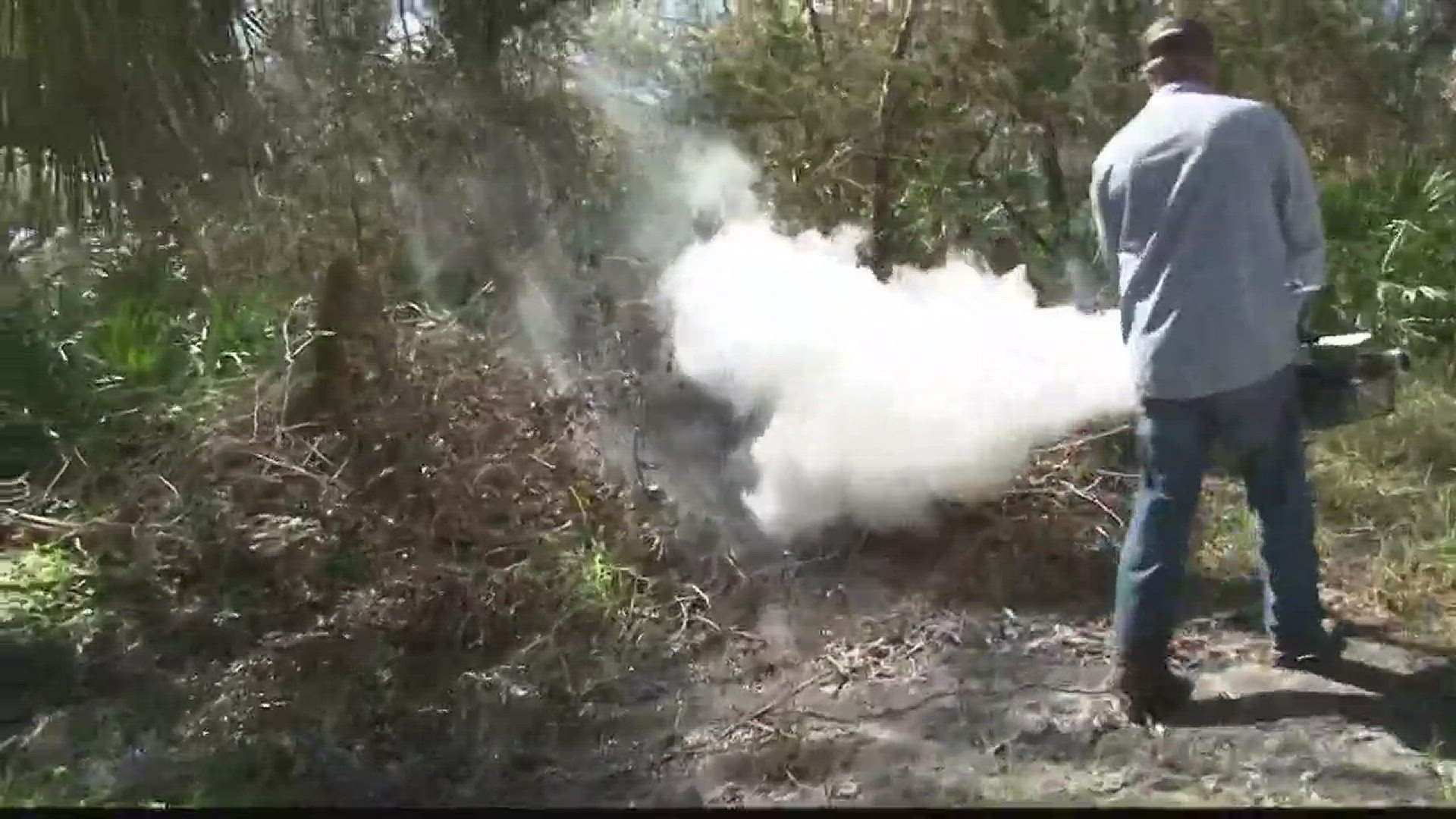ST. AUGUSTINE, Fla. -- They're back, they're big, and they're bold.
The latest wave of mosquitoes to descend on the First Coast isn't quite as large a species as the ones that blew in after Hurricane Irma, but it's close.They're also similarly aggressive.
"They will be out laying their eggs in the salt marshes," Molly Clark at the Anastasia Mosquito Control District told First Coast News on Thursday. "But as soon as they're ready for another blood meal, they're going to head anywhere they can find something with blood."
She says most of them are aedes sollicitans, a name that doesn't roll off the tongue, but seems to have teeth.
"These mosquitoes will fly during the day, they fly really far," Clark said. "They're strong flyers. They can travel up to 25 miles with the wind, so they're going to get you anywhere."
Sollicitans, she said have prospered close to the ocean especially since Sunday. It's because the nor'easter that hit the First Coast two weekends ago gave mosquitoes a leg up all while leaving spray-and-fog technicians to catch up.
"The tides were really high. There were some areas that we really weren't able to, to treat, and once they came off, this is what happened."
Clark said salt marshes are perfect for these mosquitoes to breed because the marshes offer relatively still water, plenty of shelter, and lack of predation from fish. Like the psorophora species that hatched post-Irma, they don't carry disease, but their bite is more painful than most.
"They are really aggressive and they are a big nuisance," she said.
Technician David Strickland, who has worked at the District more than 20 years, agreed.
"Sollicitans will come out in the wind."
We caught up with Strickland and a colleague as they treated an area near the St. Augustine Amphitheater, also just a stone's throw from the ocean. The pair were barrier spraying, which kills mosquitoes that land on sprayed vegetation, and fogging, which kills airborne adult mosquitoes.
"This is pretty bad," he said, asked whether present conditions are the worst he's seen.
Clark said the District has seen high mosquito numbers all year long and that disease-bearing species are on the way.
"Those should be coming out of our flood waters fairly soon. All these rains we've had have kind of been throwing our cycle off a bit."
A disruption of cycle, but not to control efforts. Strickland told First Coast News he and co-workers are putting in long shifts.
Clark agreed, "We're out there during the day, we're out there at night. We are treating as much as we can."
For the time being, the experts are cautioning people to apply repellent and wear light-colored clothing when outdoors, but that the sollicitans won't wait until dark to come out.
"They'll come out in the sun, they'll come out in 100 degrees. They don't care," Strickland said.
He added that mosquito season never really ends on the First Coast, but that different species come and go throughout the year.
Clark said it's just a matter of time, tide, and tactics before the sollicitans population dwindles.
"Within the next week we would really hope that things are back under control," she said, cautioning that rain or other inclement conditions could throw the advantage back to the bloodsuckers.
"If the weather doesn't allow us to get out and treat, that makes things take longer."

